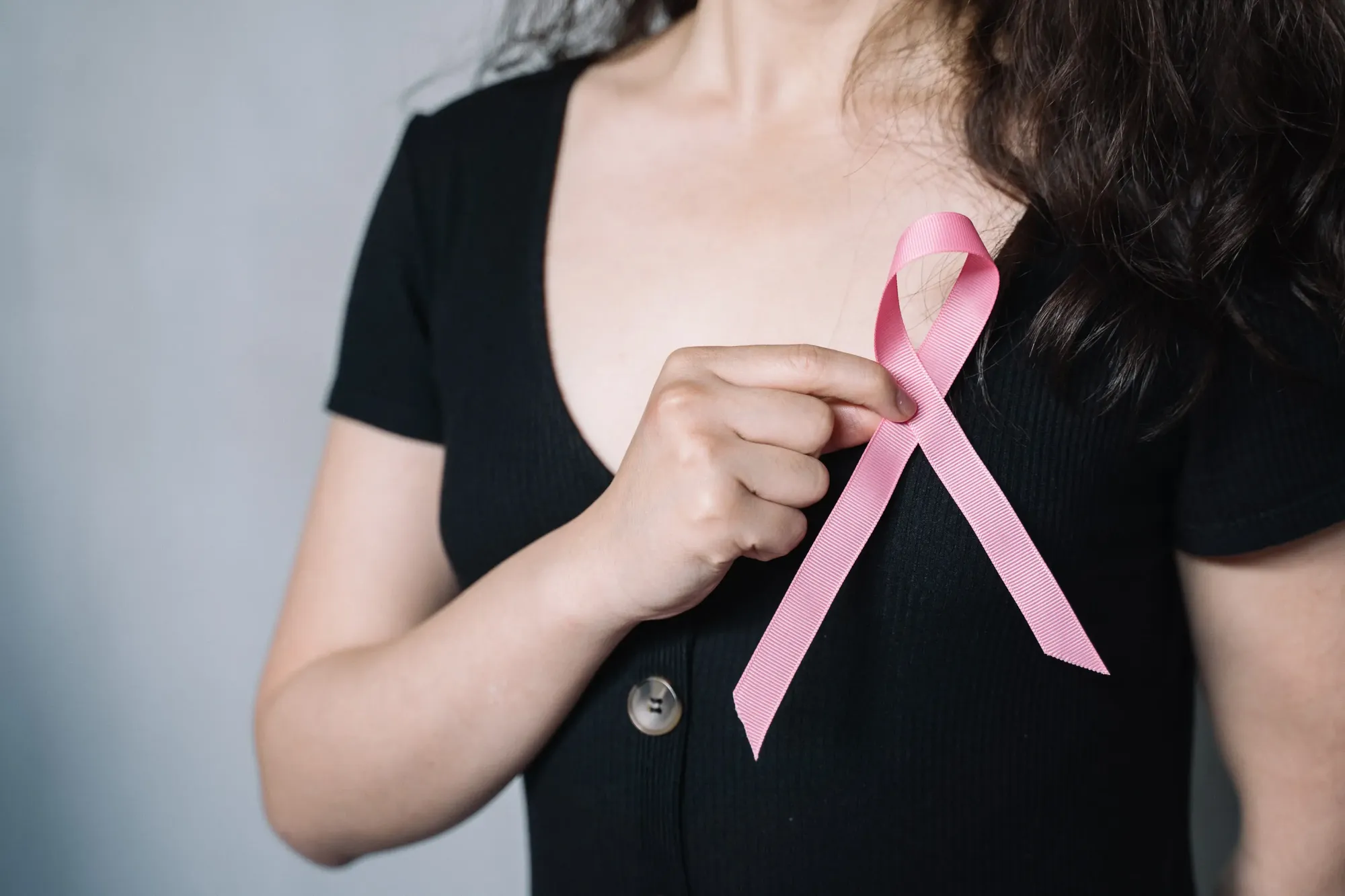How to Check Yourself for Breast Cancer While Breastfeeding
It is important to note that the breasts of lactating mothers are naturally more 'lumpy' due to milk production or even the occasional plugged milk duct.


Mothers who are lactating may find that they are more in tune with their breast health due to the numerous changes that occur to their breasts while breastfeeding. This can make it more likely to notice any warning signs. A woman can develop breast cancer at any time in her life, but there is no increased risk of cancer while breastfeeding.
It is important to note that the breasts of lactating mothers are naturally more 'lumpy' due to milk production or even the occasional plugged milk duct. However, a lump that you have had for a few weeks that does not seem to go away or decrease in size after breastfeeding or expressing should be checked by a doctor.
It is vital for every woman to be aware of breast cancer symptoms and know how to conduct a self-exam. The most typical sign of breast cancer is a new lump. A lump that is painless, hard, and has uneven edges is more likely to be cancerous, but breast cancers can be tender, soft, and rounded. They can also be painless.

Are mammograms safe during breastfeeding? Mammography and digital breast screening fall into the “usually appropriate” classification for breastfeeding women. This indicates that both approaches have a good risk-to-benefit ratio for patients.
While mammograms are the best way to detect breast cancer early, it is always good to be proactive and do what you can to check yourself for any abnormalities.
How to Do a Self-Exam While Breastfeeding
Begin With a Visual Examination
We are all familiar with the phrase, "look before you leap." This adage can also be applied when conducting a self-examination of breast cancer. By visually inspecting your breasts, you can understand what is normal for you while breastfeeding and be better equipped to identify any abnormalities. Look for unusual changes in size or shape, lumps or bumps, strange discharge from the nipples, or any other changes that seem out of the ordinary.
Please read Mastitis and plugged ducts symptoms that mothers should be aware of.
If you notice anything suspicious, make an appointment with your doctor immediately. While most lumps or masses are not cancerous, it is always better to be safe than sorry. Early detection is key in treating any form of cancer.
Use a Breast Cancer Screening Tool
A reliable breast cancer screening tool is the "shower test ." This test involves running your hands over your breasts while in the shower. As you move your hands over your breasts, feel for any abnormalities.
The hand method is probably the most well-known check for breast cancer. To do a hand exam, you'll need to stand in front of a mirror and lift your breasts. Feel around your breasts for any abnormalities. Check the area under your arms and your breasts' top, sides, and bottom.
The hand exam is an excellent way to get familiar with the usual feel of your breasts so that you can more easily identify any changes. However, it can be challenging to feel around your breasts, especially if they are large. In addition, it can be easy to miss something when looking for lumps with your hands.
That's why it's important to also do a monthly self-exam with your eyes and fingers; this is called the "look, feel, and tell" method.
This way, you can be booked early for breast cancer surgery, improving your chances of survival.

The Tushbaby Hip Carrier
With its ergonomic design and comfortable waistband, Tushbaby provides optimal support for you and your baby. Say goodbye to shoulder and back pain from traditional carriers, as Tushbaby evenly distributes your baby's weight, relieving strain and promoting better posture.
Check Your Nipples
Nipple checking can be done in the shower, so it's easy to add to your regular hygiene routine. There are a few things you should look out for when checking your nipples for cancer:
- Have they recently become inverted? Inverted nipples can be a sign of breast cancer.
- Do they have discharge? Any discharge other than breast milk can be a sign of a plugged duct or mastitis, but many different types of cancer also cause discharge.
- Are they red or inflamed? Although cracked or sore nipples are normal during the first few weeks of breastfeeding, later on, sudden redness or inflammation around the nipple can signify Paget's disease, a rare type of breast cancer.
Check Your Lymph Nodes
Lymph nodes are tiny, bean-shaped organs found throughout your body. There are clusters of them in your armpits, groin, and neck. Lymph nodes help fight infection by trapping bacteria and viruses.
The lymph nodes in your armpits can become swollen during the first few weeks of breastfeeding or until your body has regulated your milk supply. After these first few weeks, the swelling should subside. Checking the lymph nodes in your armpits is not always an accurate cancer screening test while breastfeeding, as some mothers may experience engorgement and swelling of their lymph nodes when they become engorged, which is normal.
Check the lymph nodes in your groin and neck to feel them for swelling. You can do this by running your fingers over your skin in areas where there are lymph nodes. Lymph nodes in other areas could swell up when they fight an infection or react to something else in the body- like cancer.
Check Your Breasts While Lying Down
One of the best ways to check your breasts for cancer is to do it while lying down. When lying down, your breast tissue extends out evenly over your chest wall, making it easier to feel for lumps.
To check your breasts while lying down, place a pillow under your right shoulder and then put your right arm behind your head. Using the pads of your fingers, move around your whole breast in a circular pattern, making sure to cover the entire surface area. Also, check the area under your arm and around your nipple. Repeat this process on your left breast.
If you notice any changes in your breasts that seem different from normal breast engorgement, it would be best to visit your doctor. Remember, you're the best advocate for your health, so take charge and perform breast self-exams regularly.
Does Breastfeeding Reduce the Risk of Breast Cancer?
Yes, breastfeeding has been found to protect mothers against uterine, ovarian, and breast cancer.
Research shows that if you breastfeed for two years, you significantly reduce breast cancer risk, but breastfeeding for just two weeks can also make a difference.

Why Does Breastfeeding Protect You Against Cancer?
- Fat-soluble pollutants and carcinogens are stored less in the lactating breast. Breastfeeding also reduces your exposure to estrogen.
- Breastfeeding reduces the number of times a woman ovulates, decreasing the ovulatory age and reducing ovarian cancer risk.
- Less stimulation of the endometrial lining during breastfeeding offers protection and prevents endometrial cancer.
- If a mother does not breastfeed, she will usually experience engorgement and inflammation, which can cause breast cancer.
Breastfeeding During Cancer Treatment
- Breastfeeding is safe to continue if you are undergoing: a mammogram, X-ray, CAT scan, MRI, ultrasound, and biopsy.
- Temporary weaning should be undertaken if the mother is undergoing Radioactive testing, hormonal therapy, or chemotherapy. The doctor will need to test your milk afterward to ensure it is clear.
- Radiation might limit milk production in the specific breast worked on.
- Remember that breast milk can never pass cancer cells to your baby.
- Most breast cancer treatments will allow the mother to breastfeed from the unaffected breast.
- The mother can continue to pump and dump breast milk to keep up a good milk supply so she can continue breastfeeding after the treatment.
Breastfeeding After Breast Cancer
- Breastfeeding is safe and possible after breast cancer, as long as the mother is not still on chemotherapy or radioactive therapy.
- The treated breast may produce less breast milk. Breastfeeding the baby from just one breast is possible.
- If you cannot breastfeed, you can use a breastfeeding simulator, which allows your baby to continue breastfeeding for closeness; the milk is received via an SNS. (tiny tube and bottle strapped to your chest)
